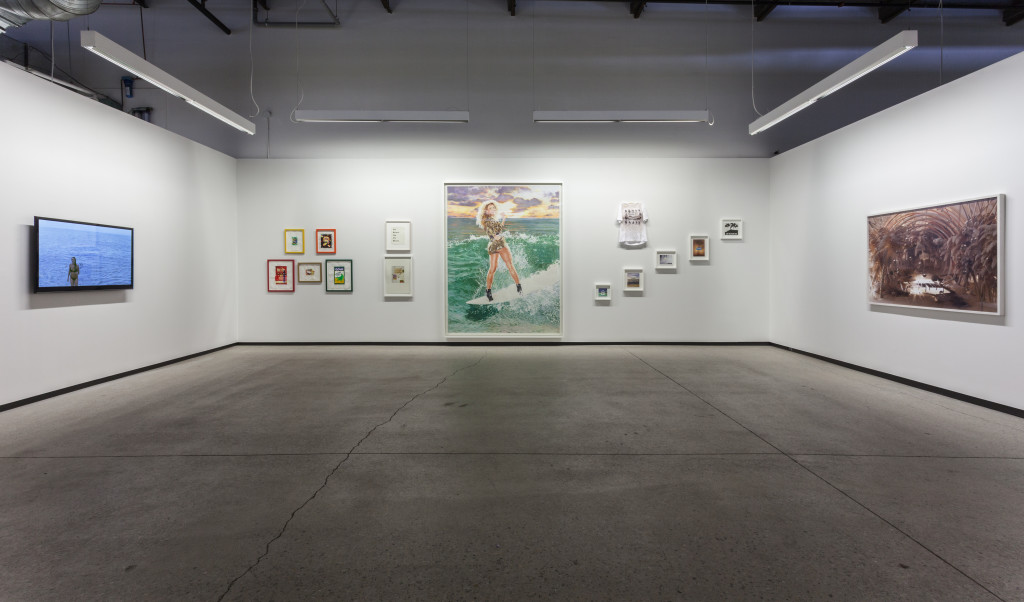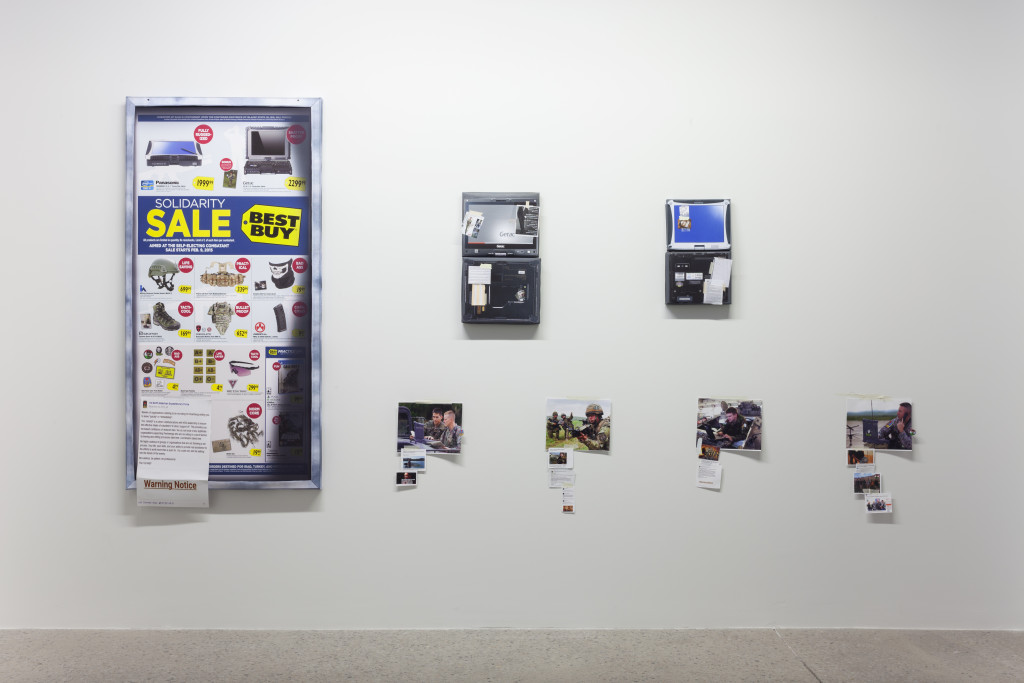Profile of the Curator: Loreta Lamargese // Part II
by Catherine Lamoureux
THE SEEN sits down with Loreta Lamargese, a contemporary curator and graduate from the University of Chicago, on her exhibition You Won’t Believe (…) which just recently closed at Division Gallery in Montreal.
Catherine Lamoureux: You mentioned that most of the artists are really young, especially for a commercial gallery like Division. Do you think the exhibition appeals more to a certain demographic; are there people who wouldn’t relate, even just because of a generational gap?
Loreta Lamargese: I think that most of the work in this exhibition speaks to how this is a generation that’s promoting certain changes. We’re always talking about the millennials, and I think a lot of the changes that are occurring in the information-based industry are happening because of the way we access information. I wasn’t particularly trying to zoom into younger artists, and there are older ones in the show who are working in similar ways. Everything in the show is coming in through my subjective lens, and because I’m so young, I’m looking at artists who are around my age. I think thematically there are links, but the fact that there is such great diversity speaks to what’s available. I feel sometimes that the Canadian market is so isolated, and so its important to create a real tangible link between artists working in Toronto, Montreal, Winnipeg, and artists working in L.A. and New York, and that all of these artists are actually in conversation with one another.

CL: References to the Internet are hugely present in the show, but that’s obviously not a tying factor, there is lots of diversity in the work and they all play on so many different themes.
LL: Yeah, it’s more so about the idea of how people gather their source material, how people access things. It’s ridiculous to think that people aren’t accessing the Internet to do so. I specifically tried to put in works that referenced older media, but some reference contemporary media really heavily. For example, Brad Phillip’s work is inextricable from his instagram, in the sense that you can’t read the work without thinking of it.
CL: How do you think sex and sexuality play into this show?
LL: I think a few things are happening at the same time; the desirability to be viewed, this vying for your attention, which is inherently such a sexual idea. Also the idea of queerness is really important to me, a kind of sexuality that’s working on multiple levels at the same time or doesn’t really fit. Thinking of Susan Sontag on camp, the queer aesthetic is basically what has perpetuated the entertainment industry, like slapstick and all of these genres like disco that are tied to entertainment and which are so queer. There are works that explicitly refer to that like the Glory hole piece. So I think you have to consider this show as a queer show, and a lot of it in terms of the curation is really queer. Queerness to me is when multiplicity and sexuality converge.
CL: There are a few more men than women, right?
LL: I had to go through so many more men to get to women artists, because of the way we access information and because that’s what is available, but the fact that its almost even is a huge feat. It is important to me to feature women and queer people and people of color. The idea and possibility of access is really central for me.
CL: I feel that the idea of wanting to be viewed is being communicated by the works and the artists simultaneously; there’s almost a sense of vulnerable exhibitionism.
LL: The artists do want to be viewed, and since so many of them have come through on the Internet they have an inherent celebrity to them, although that’s not specific to our time or our generation. The idea of the celebrity artist is ever-present throughout history. Also, there are artists who curate their own identities through various platforms constantly. The works want this too though; the fact that most are loud in many ways instills a sort of competition of gazes within each room. You can’t really walk through the space without receiving some kind of visual gratification. Even if you don’t want to pay attention, you can’t help it.

CL: I wanted to ask you what would be different about this show had it happened ten years ago, but I suppose that might just be the Let’s Entertain exhibition.
LL: I think that with perspective, what you see when you look at that show is that the artists aren’t immersed in the internet yet, like they’re casting a light on more specific things, but I think the artists in this current show deal with a broader context in the way they’re gathering information.
CL: You would seek out information with more agency back then, now it’s often just thrown at you.
LL: You had more opportunity to finish an online act; the navigation system was more linear, now it’s more of a network. But a lot of the conversations in the exhibition book from Let’s Entertain really address the seedlings of things that I was trying to focus on, and so that inspiration was tantamount for me. Entertainment used to feel cheap; it was always attached to the idea that you’re not dealing with something through and through. Then this idea of baring it all came through, where the personal is the political, and now there are so many levels of concealment happening that “baring it all” seems impossible. You can’t feel completely naked because you’re at the base hiding behind these personas you’ve created and disseminated. How can you read a body anymore?
CL: We didn’t address technology much, but it’s definitely inherent in the process of gathering information.
LL: I think media in general are central. There’s such a tactile quality to the work, and there are so many different media represented. The art market is not separate from the pleasure market, or the consumptive market, or the media market. They’re very much intertwined. This isn’t a show just speaking about entertainment; it’s a show that’s inherently represents entertainment, if that makes sense.
Loreta Lamargese is a curator and art historian based in Montreal. She holds a master’s degree with a focus in art history from the University of Chicago and an honours bachelor’s degree in art history from McGill University.